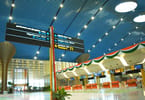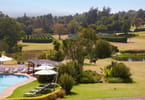Nicknamed “the Eco Island” by many, Gozo is one of the sister islands of the Maltese archipelago in the Mediterranean. Off the beaten path, Gozo has a solid track record of green initiatives which also help retain the island’s authenticity. Gozo was awarded the Quality Coast Gold Award for its sustainable practices by the Coastal Union.
Sustainability has become a way of life on Gozo. Local communities understand that the island is unique and that its culture and environment need to be protected for it to continue to thrive. Several initiatives have already been put in place, including the implementation of solar panel water heating, the use of photovoltaic panels, and the construction of a wastewater treatment plant. Many Gozitan valleys are cleaned on an annual basis in order to improve the catchment areas from flowing straight to the open sea. A number of villages on the island have been recognized with the European Destinations of Excellence awards and several popular beaches are now also blue flagged beaches.
Visitors have the opportunity to reduce their carbon footprint by using alternative modes of transport, including walking, cycling, Segway tours and kayaking. For more information on how to reduce carbon footprints while in Malta, visit Ebe a.

Gozo Cheese © Malta Tourism Authority
Ugbo na Isiokwu
Gozo farmers use organic methods to grow everything from tomatoes to figs, which is preferred by Gozitan chefs and restaurants. Every nation has its food specialties and Gozo is no exception. Here, recipes have been handed down from generation to generation and favorites have changed through the years. As with everything on Gozo, seasonal fresh produce is at the core of everything made here. Freshly picked vegetables make up the base of the platters diners enjoy with a glass of Maltese wine, while fruit and pure Gozitan honey are the cornerstones of most desserts. Many of the popular products here are still made by hand as they have been for generations.
Take the tasty gbejniet for instance; these little, round cheeselets are made from goat’s milk by the same farmers whose parents and grandparents made them decades before. More importantly, they are delicious, and are served fresh or dried, and flavored with pepper and salt. Pastizzi are another must-try for one’s first time on the island. These delicate filo-pastry parcels are stuffed with either peas or ricotta cheese, served with a cup of traditional, sweet tea. For more information on traditional Maltese cuisine, visit Ebe a.

Citadella, Gozo © Malta Tourism Authority
Eco-Enyi na Enyi ulo
Several accommodation establishments including hotels and farmhouses on Gozo are eco-labeled by the Malta Tourism Authority. The ECO certification is the national plan for ensuring the environmental, socioeconomic, and cultural sustainability of hotels and farmhouses on the Maltese Islands. The new criteria follow a shift from an environmental plan to a sustainable plan covering environmental, social, cultural, economic, quality, and health & safety.
Safety Measures for Tourists
Malta has produced an online brochure, which outlines all the safety measures and procedures that the Maltese government has put into place for all hotels, bars, restaurants, clubs, beaches based on social distancing and testing.
Banyere Malta
Agwaetiti Malta nke anwụ na-achasi ike, nke dị n'etiti Oké Osimiri Mediterenian, bụ ebe obibi kachasị dị ịrịba ama nke ihe nketa ewuru ewuru, gụnyere njupụta kachasị elu nke saịtị UNESCO World Heritage Site na mba ọ bụla. Valletta wuru site mpako Knights nke St. John bụ otu n'ime UNESCO nlegharị anya na European Capital of Culture maka 2018. Malta's patrimony in stone ranges from the most free-standing stone architecture in the world, to one of the British Empire's most formidable usoro nchekwa, ma gụnye ngwakọta bara ụba nke ihe owuwu ụlọ, okpukperechi, na ndị agha sitere n'oge ochie, oge ochie na oge ọgbara ọhụrụ. Ebe ihu igwe na-achasi ike nke anwụ na-achasi ike, osimiri ndị mara mma, ndụ abalị na-eme nke ọma, na akụkọ ihe mere eme afọ 7,000 na-akpali mmasị, enwere nnukwu ihe ịhụ na ime. Maka ozi ọzọ na Malta, gaa na www.visitmalta.com.
Banyere Gozo
A na-ewepụta agba na ụtọ Gozo site na mbara igwe na-egbukepụ egbukepụ n'elu ya na oke osimiri na-acha anụnụ anụnụ nke gbara gburugburu oke osimiri ya dị egwu, bụ nke na-echere ka achọpụta ya. N'ime akụkọ ifo, a na-eche na Gozo bụ agwaetiti Calypso a ma ama nke Homer's Odyssey - mmiri dị jụụ, nke omimi. Ụka Baroque na ụlọ ọrụ ugbo ochie na-ahụ maka ime obodo. Okirikiri ala Gozo na oke osimiri dị egwu na-echere nyocha na ụfọdụ saịtị kacha mma na mmiri Mediterranean.
#mmegharị njem
IHE Ị GA-Ewepụ na edemede a:
- Ihe ncheta Malta na nkume sitere na ihe owuwu nkume ndị kasị ochie na-akwụghị ụgwọ n'ụwa, ruo na otu n'ime usoro nchebe kachasị ike nke Alaeze Ukwu Britain, ma na-agụnye ngwakọta nke ụlọ, okpukperechi, na agha ndị agha site na oge ochie, oge ochie, na mmalite ọgbara ọhụrụ. oge.
- Agwaetiti Malta nke anwụ na-achasi ike, nke dị n'etiti Oké Osimiri Mediterenian, bụ ebe obibi kachasị dị ịrịba ama nke ihe nketa ewuru ewuru, gụnyere njupụta kachasị elu nke saịtị UNESCO World Heritage Site na mba ọ bụla.
- The ECO certification is the national plan for ensuring the environmental, socioeconomic, and cultural sustainability of hotels and farmhouses on the Maltese Islands.























